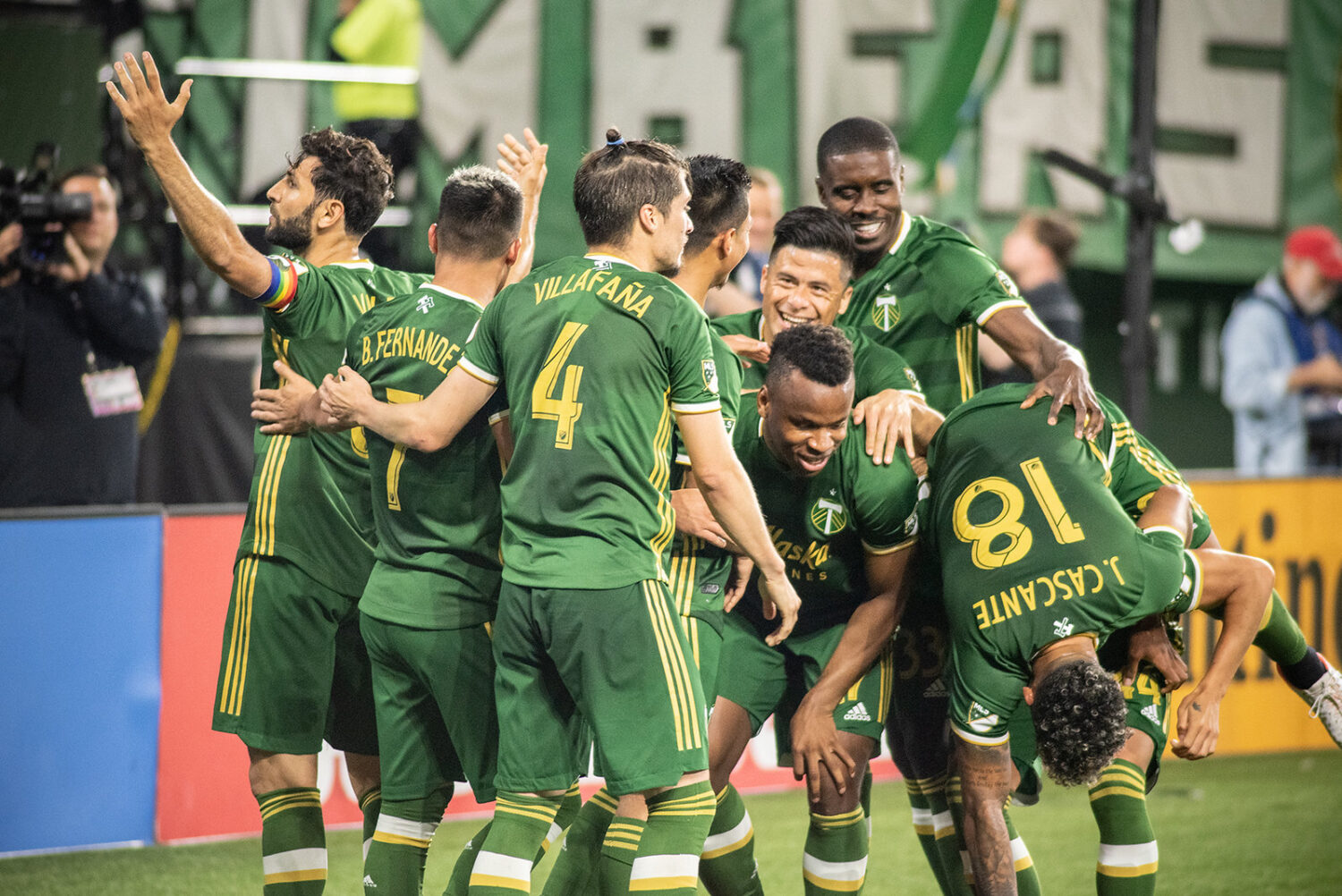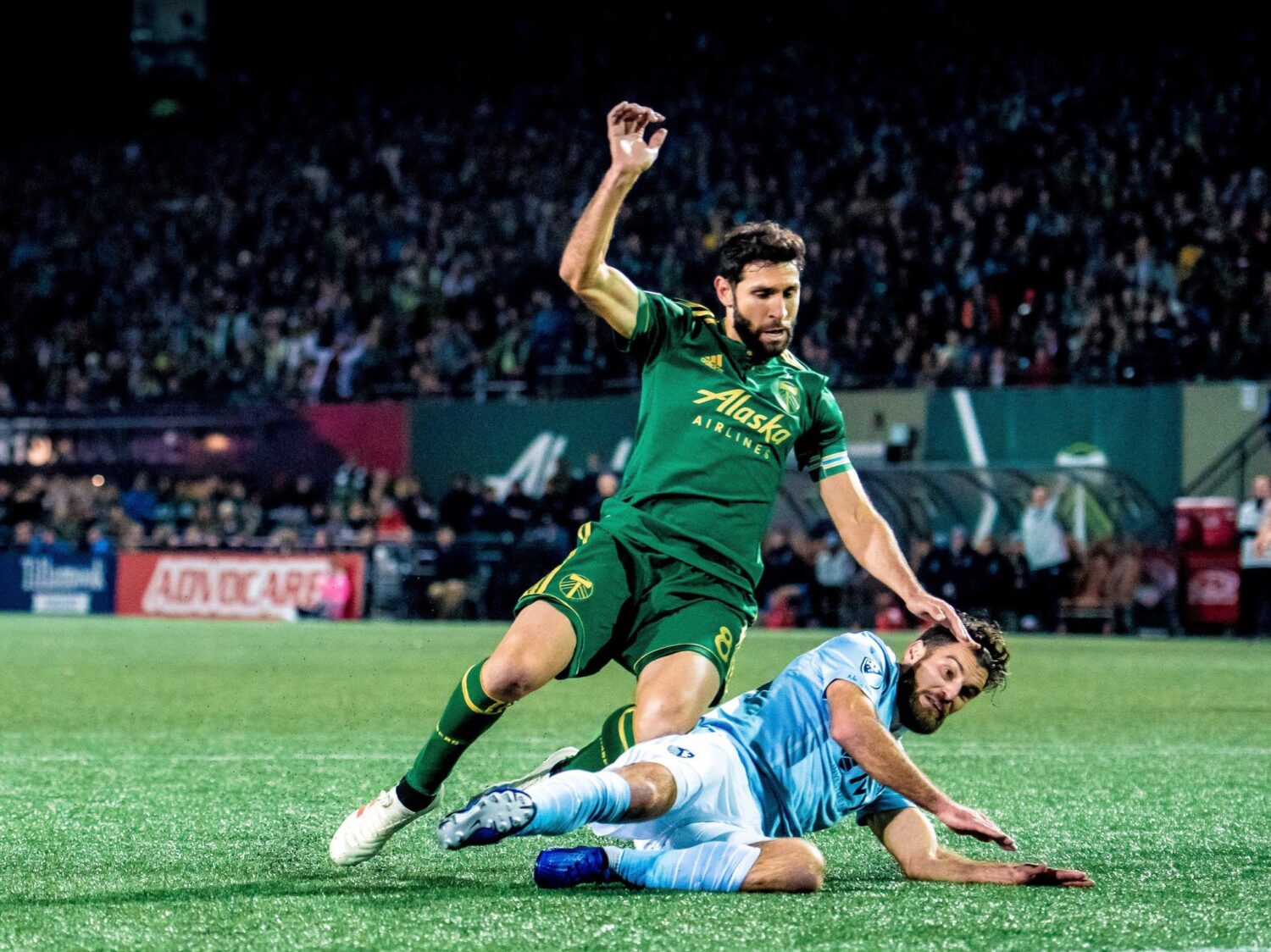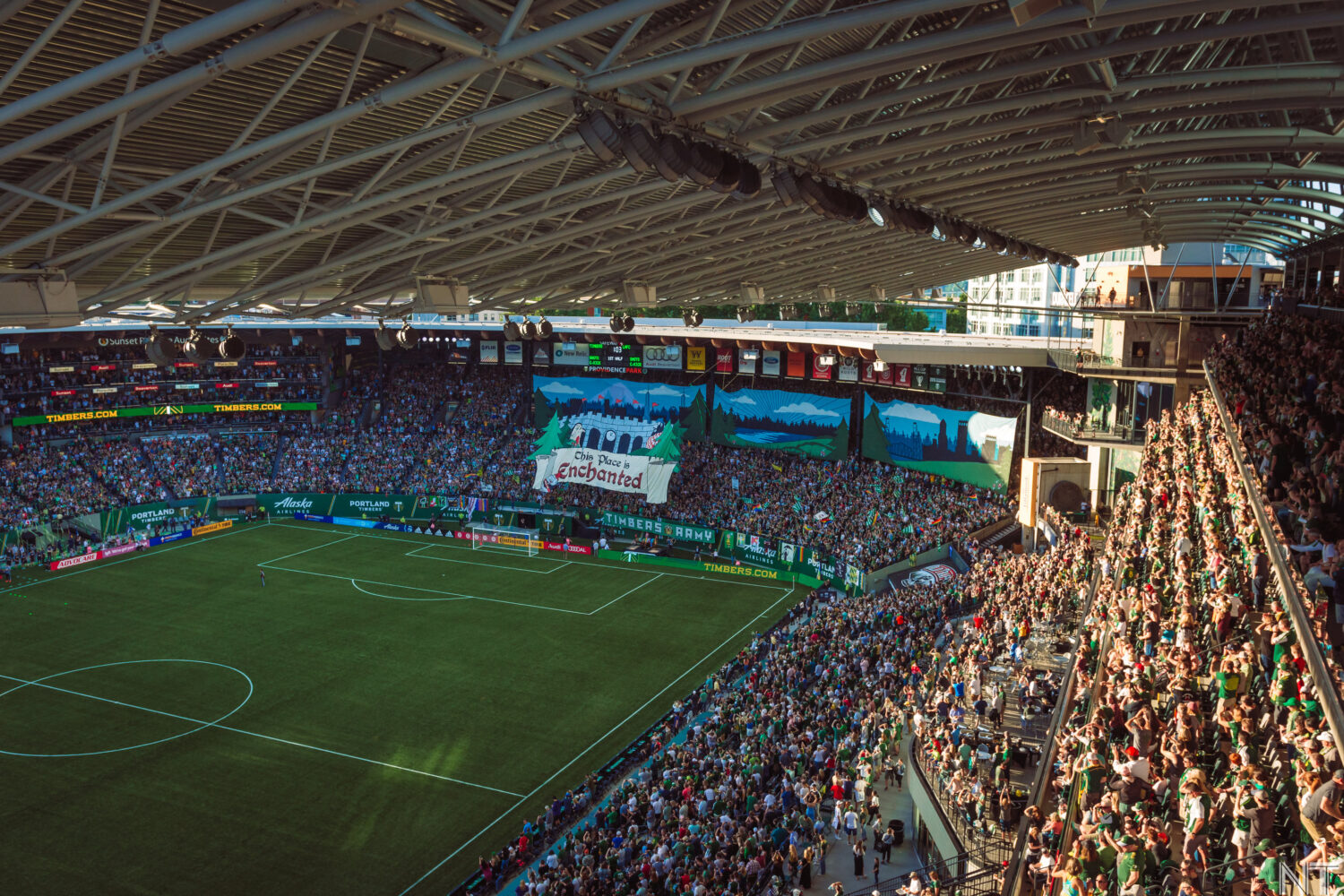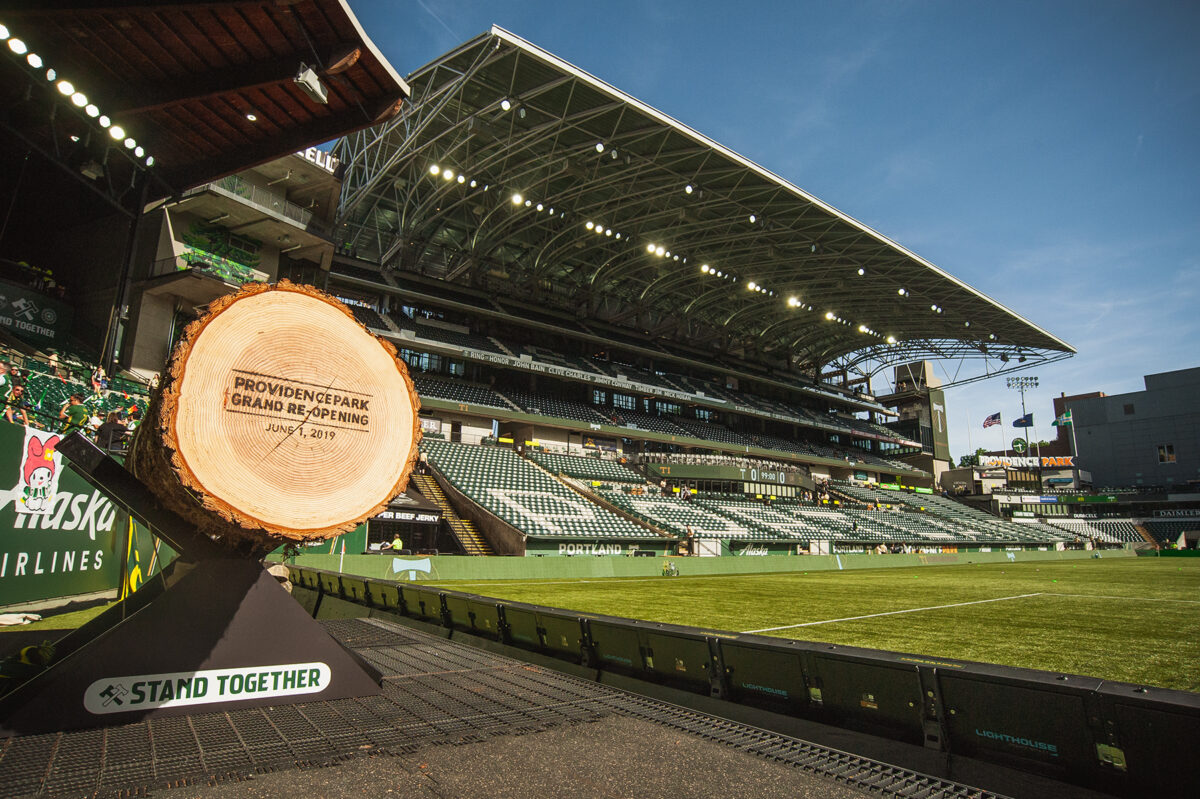June 9, 2011 was a perfect day for soccer in the Midwest.
Almost a decade has passed since Sporting Kansas City christened then-Livestrong Sporting Park, but Rick Dressel, the team’s Director of Team Administration, recalls every detail perfectly.
He remembers watching The Cauldron come to life for the first time—the electric atmosphere as the temperature dropped and kickoff loomed. That night, a recorded 19,925 fans filled a stadium with an official capacity listed at 18,467. The final result—a 0–0 draw against the Chicago Fire—may not have been the most entertaining, but it’s a night that will always stick with him.
“That night compared to the night we won it all back in 2013, as far as the energy goes,” Dressel said. “It was a beautiful night, perfect soccer weather. The energy of the place, the players’ energy level, just everything was like a cup final. To do that for the first time—and we’ve experienced opening up stadiums before as a road team, and always have thought that was pretty cool—you can feel the electricity, and that night’s atmosphere is one I will never forget.”
In the 25-year history of Major League Soccer, just five teams—including Sporting—have started their seasons with at least eight consecutive road games. From lack of chemistry to inconsistent results, each team undoubtedly faced its struggles, but also developed a sense of camaraderie. To many in these organizations, the trips came to define much more than the current season; they defined a new era with a new stadium, oftentimes more exciting and fortuitous than the one it left behind.
Six games into their 2019 season, the Timbers were in trouble. Sitting on just one point nearly halfway through their twelve-game season-opening road trip, the team needed a spark.
Portland had opened the season with a 3–3 draw against the Colorado Rapids in what was one of the coldest regular-season games in league history. In that match, a late equalizer from Rapids rookie Andre Shinyashiki provided a preview of the rough weeks to come.
In their third game, the Timbers lost 3–0 to FC Cincinnati, one of the league’s worst teams at the time. In their fifth, Portland gifted the San Jose Earthquakes their first win of the season in another 3–0 defeat.
Shortly after their loss at Avaya Stadium, Portland held a team meeting.
“Once we had that reflection, some words were said, and some feelings were vested in that moment,” forward Jeremy Ebobisse said, “but we started to turn it around and played better together.”
“You know that the first five games of the year do not make or break your season,” goalkeeper Jeff Attinella said. “Obviously you want to get out to a good start, but I think the circumstances that we were in were beyond challenging when you’re thinking about coming off a Cup final.”
The team seemed to find a spark of momentum in Frisco, Texas the next game. A controversial handball called in the 95th minute denied the Timbers a late point against FC Dallas, but the result gave players a bit of hope. The next week, the Timbers picked up their first win of the season, beating the Columbus Crew 3–1 at Mapfre Stadium.
“When they scored early in that game in Columbus to go up 1–0, you could just feel the team loosen up, because they hadn’t scored first in any game that year,” Timbers TV play-by-play announcer, Jake Zivin, said. “Columbus had some good chances in the first 30 minutes, and you don’t want there to be that feeling of ‘here we go again.’ Then they score and you could sense the mood rise. From then on it was like, ‘Okay, they’re back. This is what we’re used to from them.’”

By the time the 12th and final game rolled around, the Timbers were sitting on 11 points. 90 minutes later, they would leave Chester, Pennsylvania with three more after defeating the Philadelphia Union 3–1. As summer—and a long homestand at newly renovated Providence Park—approached, the Timbers had just five road games remaining on their schedule.
“Given the adverse conditions, having the cross-country trip, that was a game we were willing to concede, but we came out flying and in good form,” Ebobisse said. “That was the end of our road stand as well, so we got over this massive hump, and that was a major boost for what was to come.”
If, in March of 2011, you had asked Callum Williams to point out Salt Lake City or San Jose on a map, you may have been met with a blank stare.
The 21-year-old broadcaster from Birmingham, England took a chance on American soccer when he traded his job with the BBC for a play-by-play broadcasting position with Sporting Kansas City. Just six days after landing in Kansas City for the first time, he was off to Los Angeles to cover the team’s first game of the season against Chivas USA.
Williams learned a lot about North America and its intricacies during that opening road trip. Vancouver, BC became one of his new favorite cities, and now he has family there. Williams estimated that he spent more time at Chicago’s Midway Airport than he did at his new home in Kansas City over the season’s first few months.
“I’ve never heard of Columbus, Ohio. I’ve certainly never heard of Denver, Colorado, and all these other places,” Williams said over Zoom. “For me, I relied a lot on adrenaline, and because I was so young and because I had such enthusiasm for the new challenge, it all went by in a flash, really.”
Necessary tasks like getting a Social Security number, viewing apartments, and obtaining a driver’s license took a back seat to jetting around the United States and calling games for a struggling Sporting side that couldn’t seem to find any positive momentum.

That season, Williams forged a solid working relationship with head coach Peter Vermes, who always took the time to talk to the young broadcaster and answer his questions.
Despite the criticism that Vermes received when his team sputtered out of the gate, Williams and Dressel both believe that he was a big reason as to why the team didn’t break early on.
“The way Peter coaches, he tends to have a really good group of guys because of the way he coaches and the way he expects everybody to put their chair in,” Dressel said. “We typically have really good players, so I can’t think of any challenging moments in that respect.”
Behind the leadership of Vermes, Sporting rallied in the second half of the season, making its way to the 2011 Western Conference Finals before eventually being eliminated by the Houston Dynamo.
Nick Hagglund arrived in Toronto to what appeared to be a team in transition. The tenth pick in the 2014 MLS SuperDraft draft would be joining a team that finished ninth in the East a season ago, but also one that just spent big money to land Jermain Defoe and Michael Bradley.
With just ten games remaining in Hagglund’s rookie season, the team fired head coach Ryan Nelsen and promoted its academy director, Greg Vanney, to the role. This all came with looming renovations to BMO Field, which would force Toronto to start the following two seasons with long road trips.
Vanney was keenly aware that spending long weeks away from home spelled potential disaster, but also figured that the trip could help the team build chemistry. Luckily for him, his second theory proved correct.
“For us, it felt like [the road trip] set a good foundation for the rest of the season, so that when we came into our form, we were defensively sound and we were able to play the soccer that we wanted to,” Hagglund said.
In Hagglund’s mind, there was no bigger reason for the team’s eventual upswing than Bradley’s leadership. Yes, the talent was there, with players like Sebastian Giovinco and Jozy Altidore, but many acknowledged that Bradley was the glue that held everything together. In many ways, he was TFC’s culture.
When asked to expand on Bradley’s influence, Hagglund brings up his first-ever MLS game against the Columbus Crew. Like any rookie would be, he was anxious, but Bradley soothed the 22-year-old’s nerves by telling him to relax, play simple, and find him. And that leadership wasn’t just displayed on the field.
“He cared about the whole organization,” Hagglund said. “It wasn’t just about the team. He cared about the organization from the top to the bottom, doing things the right way, and demanded those things to be done the right way. From how the field is to how families are taken care of, he truly embodied what the club was about.”
Luke Wileman, who often calls TFC’s games for Canada’s The Sports Network, spent a lot of time around the team during those seasons. He believes that Toronto’s 2017 treble-winning team would not have been possible without the culture and work ethic that Bradley set back in 2015.
“You need leaders in those situations, and I think one of the reasons TFC has been so successful is because of the change in culture, expectation, and leadership that Michael Bradley brought when he originally came in,” Wileman said. “It’s those kinds of leaders that you need to build that culture. Michael Bradley is invaluable in terms of setting the standard and holding players accountable. That was a key for TFC.”

According to those who spent time around the four teams, the importance of having a leader on these long road trips cannot be understated. Yet, while DC United had veterans, the abundance of younger players made the team’s 14-game opening road trip in 2018 all the more unique.
United played 12 of their first 14 games on the road, but their two home games came at the Naval Academy in Annapolis, Maryland, and 4,000-seat Maryland SoccerPlex, respectively. When the team began to play at Audi Field, many within the organization still joked that they still felt as if they were going to National Airport.
“You don’t think that in a few months, in the heat of summer, Wayne Rooney is coming, but you knew what was coming at the end of the summer in Audi Field, a new stadium. You’re just going to get energy from that,” DC United play-by-play voice, Dave Johnson, said.
The young core of players bought into that idea. They knew going into the season that the trip wouldn’t be easy, but they committed to growing together as a team, and by the end of the season it paid off.
By the end of the road trip, whether it was seven weeks or 14, every team expected to come home to either a brand-new or renovated stadium for a lengthy homestand. While these opening road trips seemed to drag on, there was always a light at the end of the tunnel.
Hours before Toronto FC’s first game at freshly renovated BMO Field, the organization held a grand reopening ceremony to celebrate a project years in the making. Vanney, Mayor John Tory, and then-Maple Leaf Sports and Entertainment president Tim Leiweke were among those in attendance to usher in a new era of soccer in Canada’s biggest city.
The sun shone down in Toronto, and the mood couldn’t have been better. With the team returning home on eleven points, there was plenty of optimism around the organization. With a new roof in place and expanded capacity, the team finally had a home that matched its ambitions.
“When the team signed Defoe and Bradley, [Leiweke’s] big thing was, ‘Why can’t we be great?’” Wileman said. “‘TFC has had all these things go wrong, but why can’t we be great? Two years later, they make the playoffs for the first time, they have Altidore, Bradley, and Giovinco in. Now they are opening up this stadium that looks so much better than it used to.”
“Seeing the stadium for the first time, it was like ‘Wow,’” Hagglund said. “This is a true football stadium. This is going to be packed. You’re going to live for the darkest nights where it is rainy, where it is cold, and the lights are on with the place packed and ready for big games.”

In DC, opening night at Audi Field felt just as surreal, but for a completely different reason. If you were to have told Johnson, who started calling the team’s games back in 1996, that he would be covering the club in a brand new venue in the heart of Washington, DC, he might have laughed. This was Washington, after all, where politics and bureaucracy often make it impossible to land a downtown stadium. Johnson brought up past examples in which local professional teams tried and ended up with stadiums in Landover, Maryland.
Little did he know that 24 years later, Wayne Rooney would be suiting up for United the same summer that sporting excitement in the city was reaching all-time highs. It was a far cry from past seasons of playing at a run-down RFK stadium, to say the least.
“There’s no lightning in a bottle story here,” Johnson said. “Soccer has been laid down for fifty years. In Washington, DC, go look at 1980, when Johann Cruyff played with the Diplomats. They averaged 20,000 fans a game. Look at what Portland did, or what Seattle did in the old NASL. All of this doesn’t just happen overnight. People grow up with the sport, and that’s why you reach your position now.”
When asked to look back and reflect on whether or not the road trips and the hassle were worth it, nearly everybody took a moment to collect their thoughts. At the end of the day, nothing compared to the feeling of coming home: the packed stadiums, the unique energy, the chance to be there for a unique moment in franchise history.
“This stadium changed absolutely everything in [Kansas City], and I think that leading up to the stadium, it’s a story that doesn’t often go told honestly,” Williams said. “A lot of people weren’t really fans at the time, or only started following it when the stadium was built. It was a period of adjustments, a stage of a lot of those players’ lives where they had to prove they could play at this level as well. It was a fascinating introduction to the world of Major League Soccer, and it was a stage of my life that I will never forget.”

